Heeds
The reason for design space exploration is to drive innovation. In this week’s blog we are looking at how you can get more value out of you modelling and simulation environment. And thereby drive innovation.
The goal of design space exploration is to move beyond the standard use of simulation for validation and trouble shooting to have greater impact on cost, quality, and time to market. However, the value of design space exploration lies in to automate the simulation process, so that the engineer has more time free for other activities. Additionally, to enable a broader design spaces to be able to discover designs which you might not have considered otherwise. HEEDS helps you to align effort and value with its four key enablers:
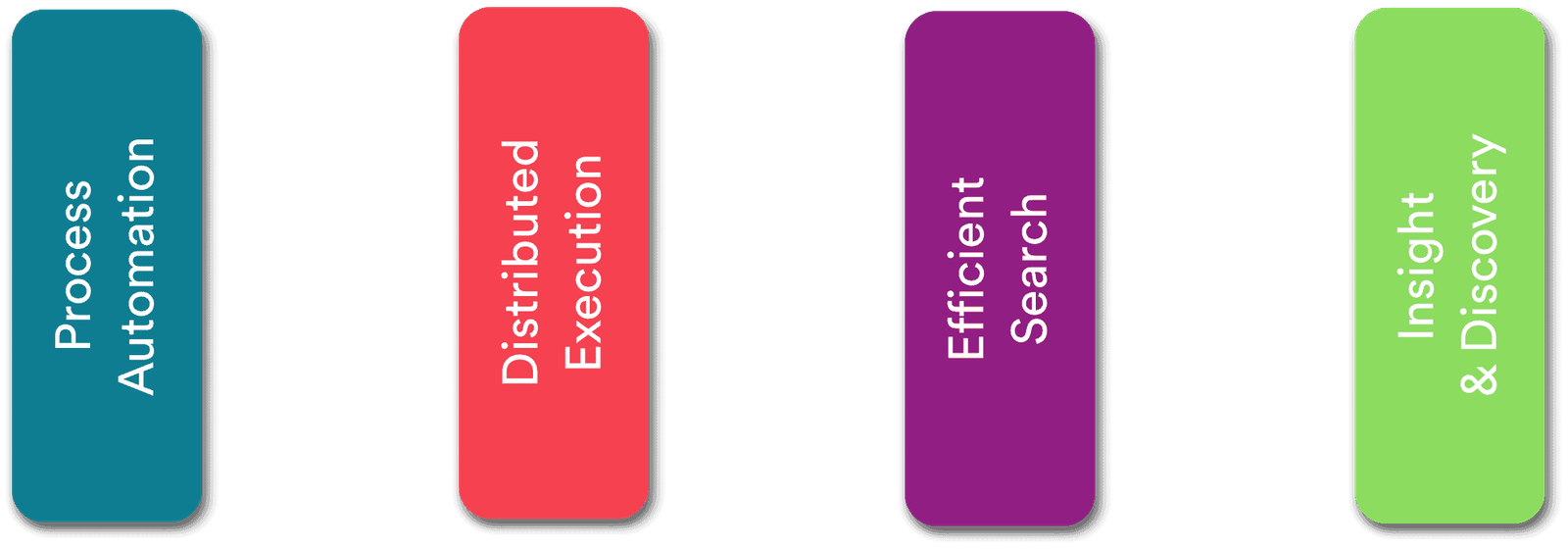
To demonstrate the power of HEEDS, I would like to share a study with you that was performed to improve the flow efficiency between the inlet and outlet side of the engine pipe while minimizing outlet swirl. Let’s walk through the four key enablers to demonstrate how each one plays an important role in finding better designs.
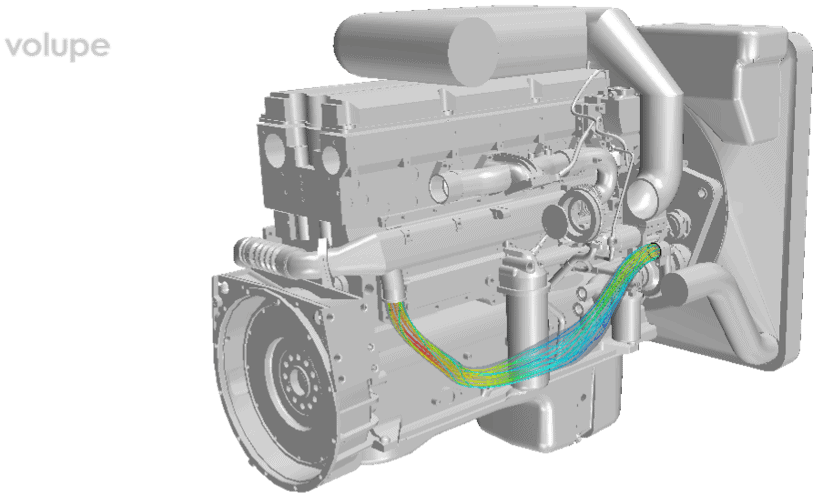
Process Automation with HEEDS
HEEDS manages the interaction between software and knows out of the box how the run most CAE tools. In this study HEEDS takes control over a parametric NX model for the pipe geometry and exchanges the part inside the simulation setup for flow analysis with Simcenter STAR-CCM+. There is no need for manual data transfer or custom scripting and while HEEDS automatically iterates through design alternatives to improve the performance of flow uniformity and swirl at pipe outlet, time can be spend more efficiently.
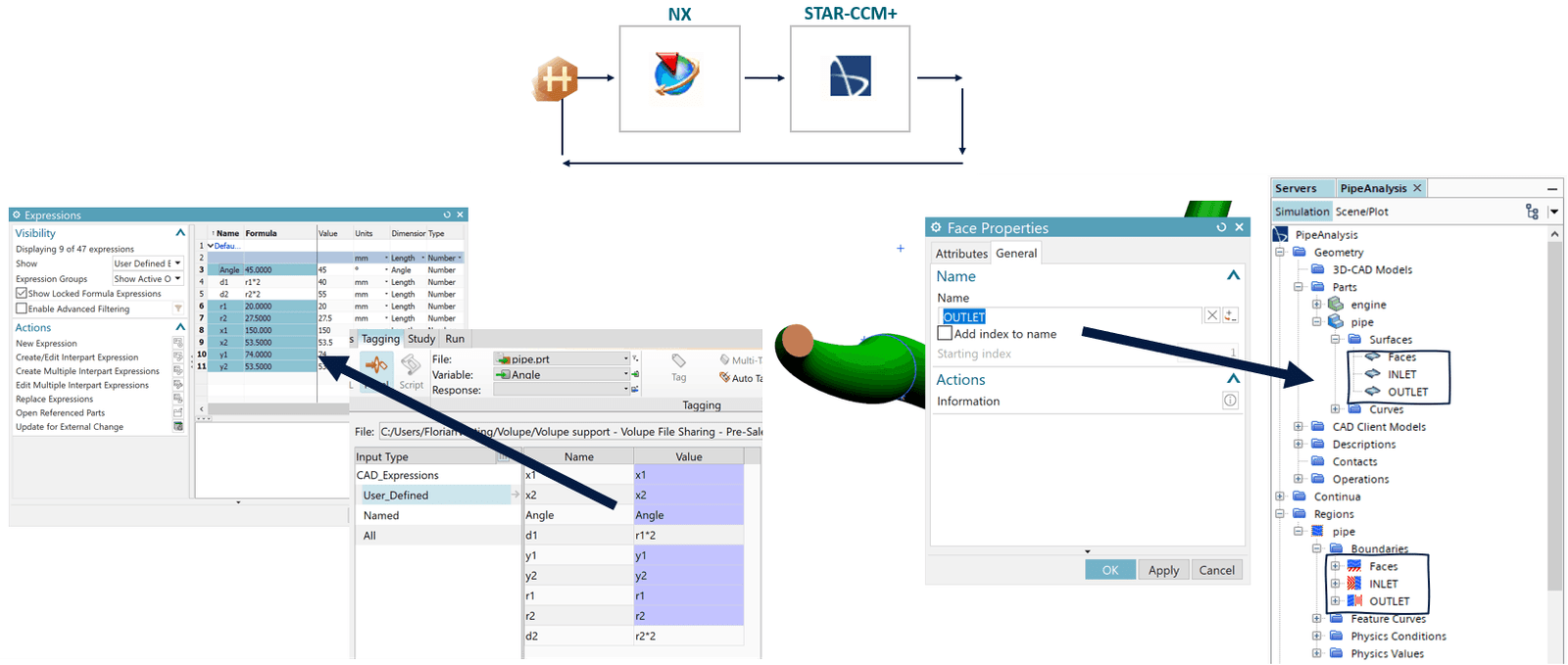
Distributed Execution
Users of HEEDS can easily connect to different compute resources such as Linux, Windows, or the Cloud and can drive any tool on different locations. For the pipe flow I use NX locally on a Windows machine. The generation of our new CAD files does not require much resource. However, the flow simulation takes somewhat more time and is executed on a remote Linux workstation with 2 variants simultaneously.
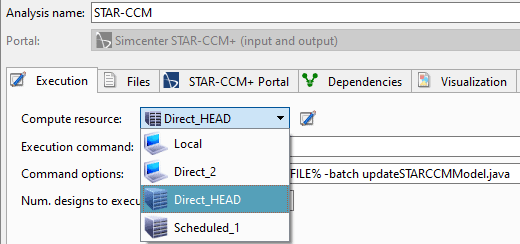
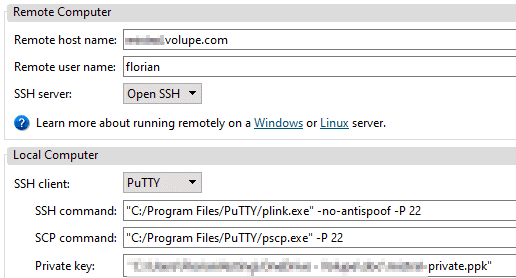
Once you set up the password free remote profile, you can assign the resource individual for each of the processes that you will run. This will reduce simulation turnaround with multiple levels of parallelization, tasks and cores. However, on your dashboard you´ll get all the necessary information about the currently running study such a preview of created variant, simulation time etc.:
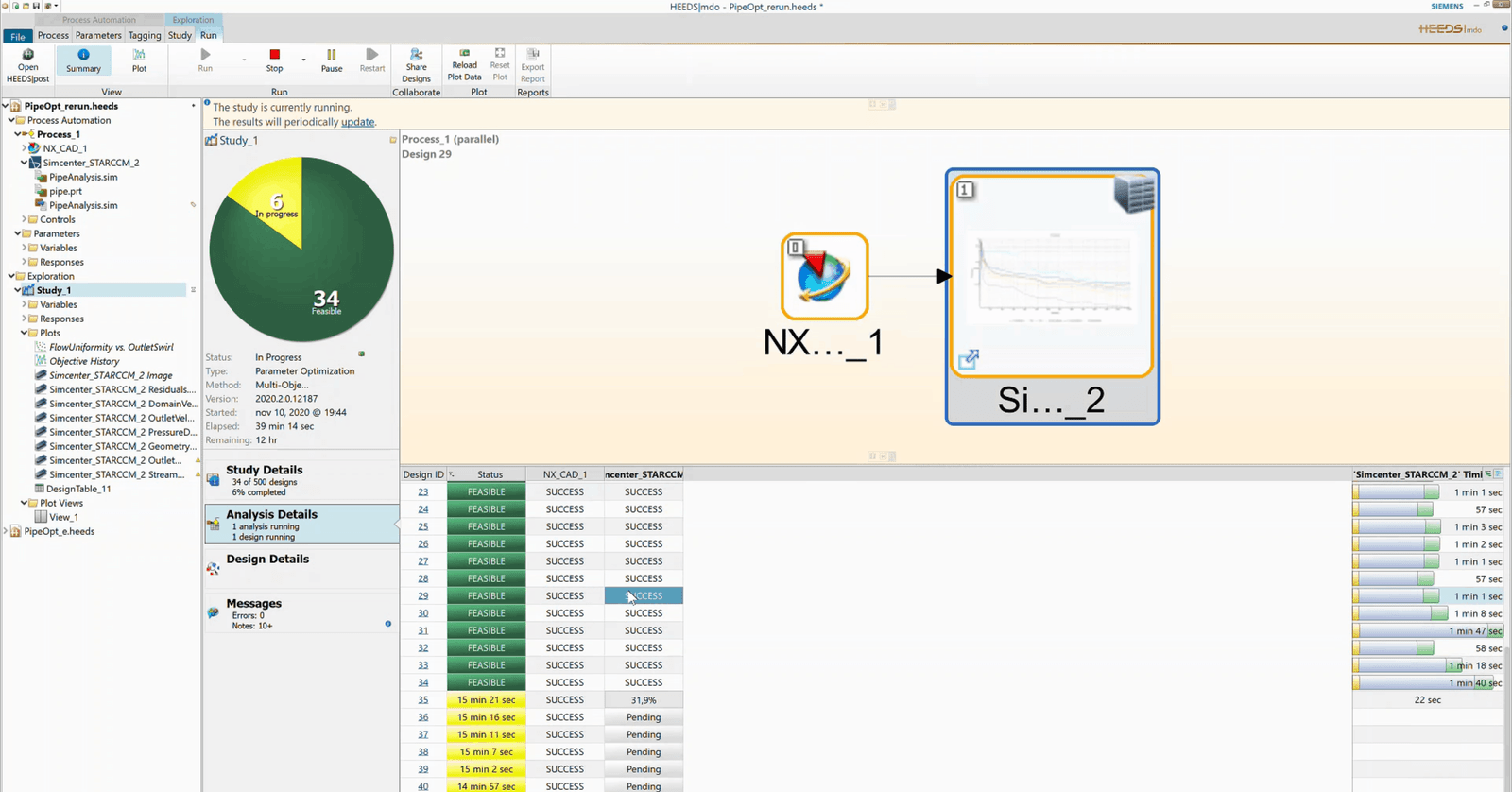
Efficient Search
When it comes to search the design space HEEDS has the most efficient search algorithm on the market. To make you confident that you find large improvements, with what ever number of variables you have. The SHERPA approach combines the best of all search strategies and adapts depending on the number of evaluations based on your budget and time-frame.
Insight & Discovery
Now that you have gone through many variants HEEDS makes it very easy to extract meaningful data to make intelligent decisions. Plot views can be used to view multiple plots on the same screen which allows the user to visualize design trends more comprehensively.
Looking at the pareto front, here, we can click through the variants and instantaneously review the performance and geometry. You might notice jump in outlet swirl data which is an indication that there are two separate families of designs, that compete between flow uniformity and outlet swirl, and converge at the pareto front. This allows you to determine which design family works best depending on manufacturability, packaging space, etc. and provides all the insight in one single study to make those decisions!

Plot tools in HEEDS visualize
The plot tools in HEEDS post help you to visualize and communicate your findings. In our case I plot the all valid designs in a parallel plot and only highlight the pareto optimal designs in two families (at the upper and lower pareto front, see video above). From this plot is becomes obvious that the two design families follow different geometry pattern. And that the reduction in swirl is related to a larger chamber below the outlet.
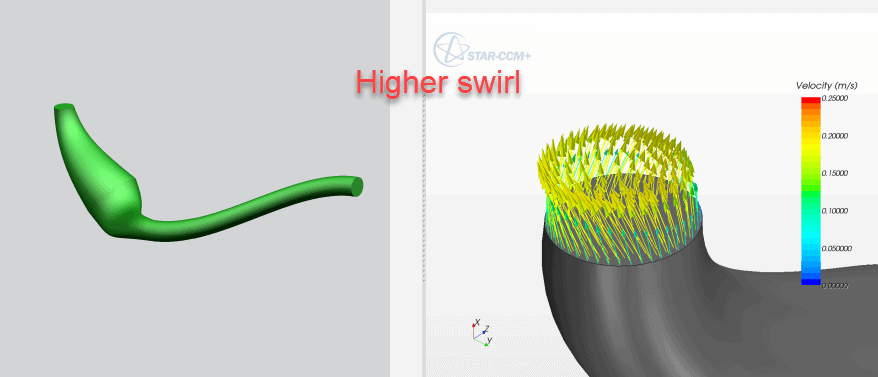
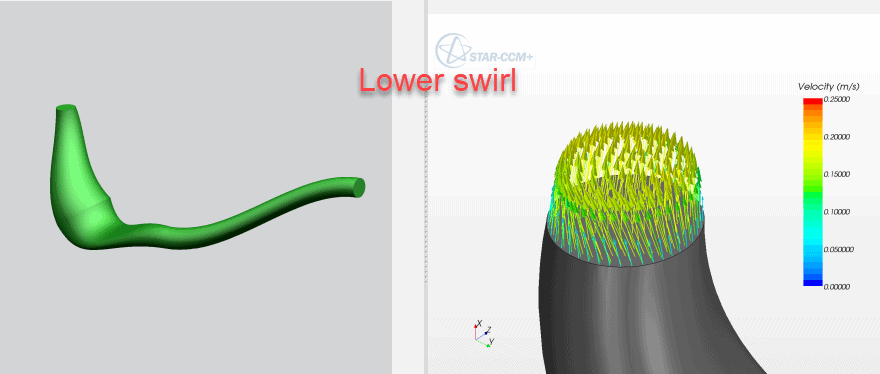
With these possibilities in HEEDS you can easily perform simulation driven design, identify design alternatives and communicate your findings. I truly hope you find this article interesting. And as usual please do not hesitate to reach out to us at the support team at Volupe and case you would like to know more support@volupe.com.
Read also:
Bubble plots for design exploration
Release of Simcenter STAR-CCM+ 2020.2 part 5
Simcenter Flotherm™